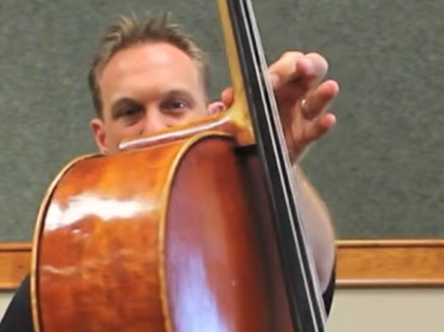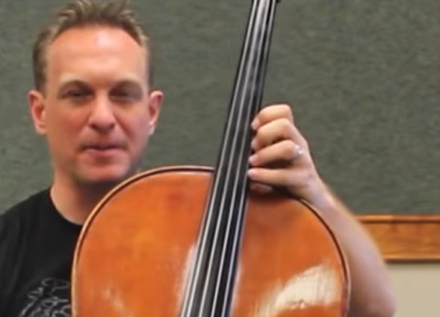Your New Favorite Position
In many ways, G major two octaves is easier than the F major two octave scale you should have already learned. Each scale in this sequence takes you higher and higher up the fingerboard and introduces a new position. With each new position, new repertoire becomes available to you and no where is that more apparent than with 4th position. If your goal is to play in a community or school orchestra you will find that 70-80% of the music you play can be done in either 1st or 4th position. Next to first position, it is by far the most important and frequently used position on the instrument!


Once you feel confident doing the slide-whistle exercise and identifying the 4th position landmarks, you are ready for the G major two octave scale on the cello.
G Major scale fingering is G-1-3-4-D-1-3-4-A-1-3-4-(shift to 4th position)-1-3-4- back down 3-1-4-3-1-A-4-3-1-D-4-3-1-G.

Pro Tip
If you are playing in 4th position then you have likely developed vibrato. If not please consider adding that skill to your toolbox. Those who are using vibrato will find that vibratoing 4th finger in 4th position requires the elbow to be a little higher than usual and the thumb more relaxed.
Once you have discovered the reliability of 4th position in the G major scale, start using the position on other strings. It comes in very handy to avoid obnoxious sounding open A’s. Using second finger in 4th position on the D or G-string is a convenient way to avoid backwards extensions for B-flat and E-flat. In ensemble music, after a long rest where you have lost your previous position, 4th position is the most convenient way to start cold with full confidence in your intonation. Don’t be afraid to experiment with 4th position on all 4 strings. It will make you a much better player!
